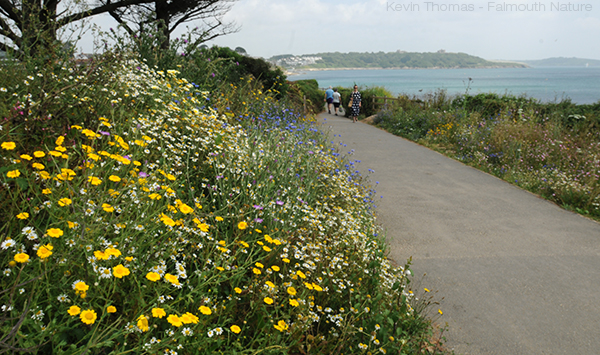Most
stories that begin with darkness falling over a cemetery lead into a tale of
the supernatural, after all it is a scene seen in countless horror movies. Choosing
the name, Creatures of the Night for the first event to be held by Falmouth and
Penryn Nature Wanders in Falmouth’s Victorian cemetery in part gave a nod to
this connection. However it also aptly described the evening activities than
ran from 1930 until 23.00.
The idea
for the event came from Madeleine Fabusova who is researching moths at the
nearby University of Exeter’s campus at Tremough. She was assisted during the
evening by five friends from the university’s Ecology Society.
Preparation
entailed hanging a special blue light on one of the white side walls of the
chapel and placing a moth trap nearby. As the start time approached people
started to arrive and soon a crowd had gathered by the chapel’s entrance. It
was a drop in event and new people joined us throughout the evening and overall
the event was very well attended.
Madeleine
began the evening with a description of the evening events and a short
introduction to moths. I followed this with short talk on nocturnal parasitic
wasps with occasionally will be found in moth traps. This led me onto the one
of the most impressive parasitic wasps, the American Tarantula Hawk wasp which
included my impersonation of its dance that confuses the spider. It has to be
seen to be believe and here is an excellent video.
With
darkness falling moths began to land on the chapel wall and once settled they
became remarkably docile allowing people to see them close up. There really was
some stunning looking moths and each was named by Madeleine or one of the other
experts.
With more
people arriving, Madeleine led the gathered people to look at the moth trap
giving an explanation of how it worked while examining the moths inside. After
this she and friends used torches and nets to collect moths as they led the
group on a circular route using the cemetery paths.
While this
was happening I was left on my lonesome to keep an eye on the light on the
chapel wall while trying to ignore the fact that this situation usually doesn’t
end well in films. I was understandably happy to greet new people arriving.
By the time Madeleine and her group returned an impressive number of moths had settled on the chapel walls. During the evening a total of 28 different species were recorded, see the video for a complete list.
From the
way people responded, the interest seen and the positive feedback received it
was a very successful evening. With the arrival of Autumn moth activity
decreases and so it will not be until next spring that the next one will held
in the cemetery.
A big thank
you to the members of the University of Exeter’s Ecology Society (Finley, Alex,
James and James and Ben) for their assistance with the event.
Hopefully over
the winter Madeleine will write a post for the blog describing her interest in
moths and the research that she is carrying out.




